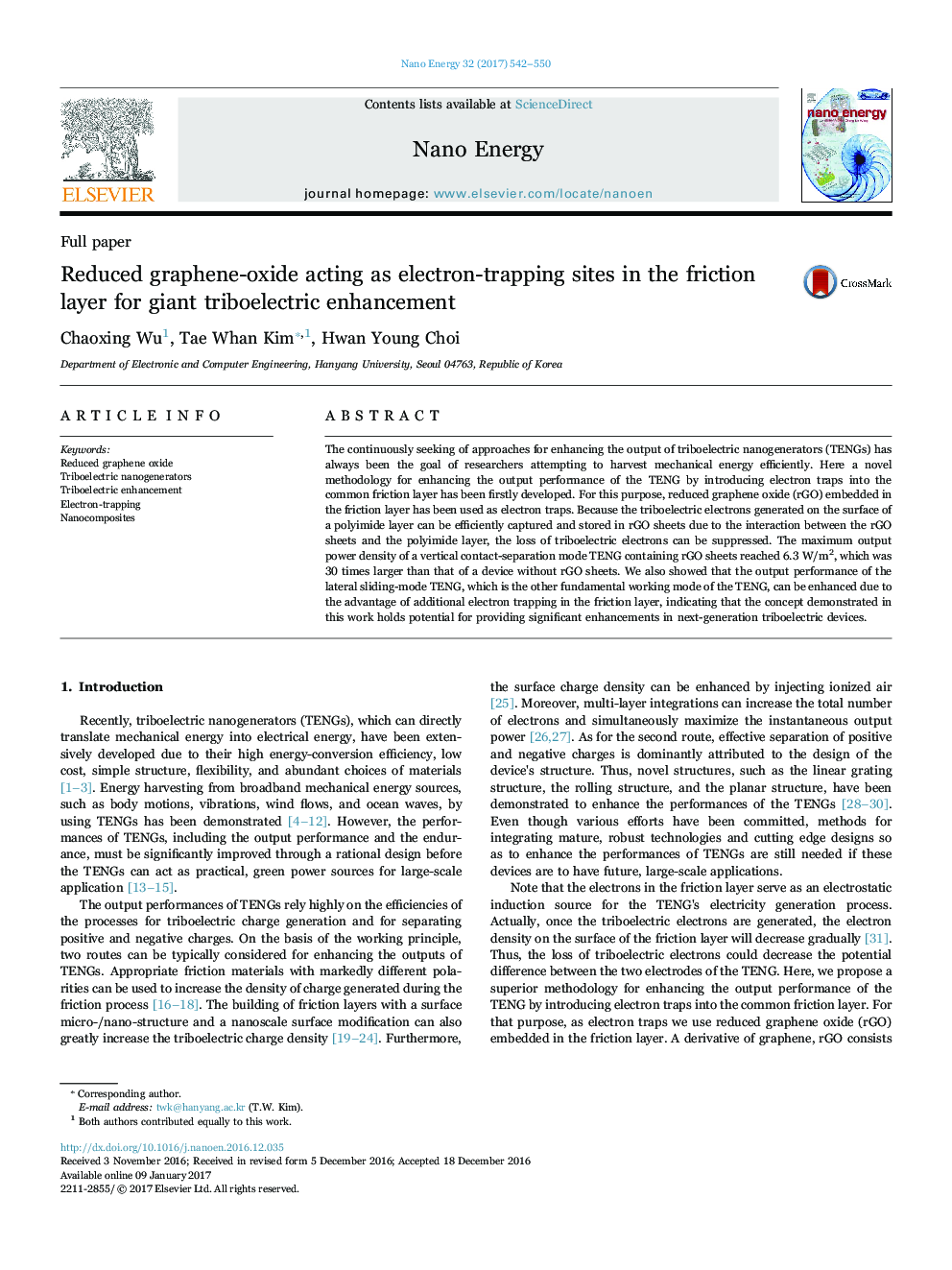| Article ID | Journal | Published Year | Pages | File Type |
|---|---|---|---|---|
| 5452141 | Nano Energy | 2017 | 9 Pages |
â¢Novel methodology for enhancing the output performance of the triboelectric nanogenerators (TENGs) by introducing electron traps in the friction layer.â¢Loss of triboelectric electrons can be suppressed by introducing electron traps.â¢Reduced graphene oxide (rGO) embedded in the friction layer has been used as electron traps.â¢Maximum output power density of a vertical contact-separation mode TENG with rGO sheets is 30 times larger than that of a device without rGO sheets.â¢Methodology for output enhancement can be extended to the lateral sliding-mode TENGs.
The continuously seeking of approaches for enhancing the output of triboelectric nanogenerators (TENGs) has always been the goal of researchers attempting to harvest mechanical energy efficiently. Here a novel methodology for enhancing the output performance of the TENG by introducing electron traps into the common friction layer has been firstly developed. For this purpose, reduced graphene oxide (rGO) embedded in the friction layer has been used as electron traps. Because the triboelectric electrons generated on the surface of a polyimide layer can be efficiently captured and stored in rGO sheets due to the interaction between the rGO sheets and the polyimide layer, the loss of triboelectric electrons can be suppressed. The maximum output power density of a vertical contact-separation mode TENG containing rGO sheets reached 6.3Â W/m2, which was 30 times larger than that of a device without rGO sheets. We also showed that the output performance of the lateral sliding-mode TENG, which is the other fundamental working mode of the TENG, can be enhanced due to the advantage of additional electron trapping in the friction layer, indicating that the concept demonstrated in this work holds potential for providing significant enhancements in next-generation triboelectric devices.
Graphical abstractDownload high-res image (396KB)Download full-size image
